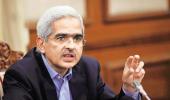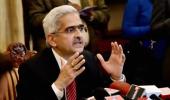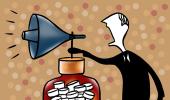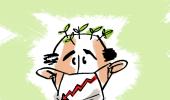Many households and individuals have maintained their consumption levels either by cutting back on savings, or resorting to borrowing, or both.
Krishna Kant reports.
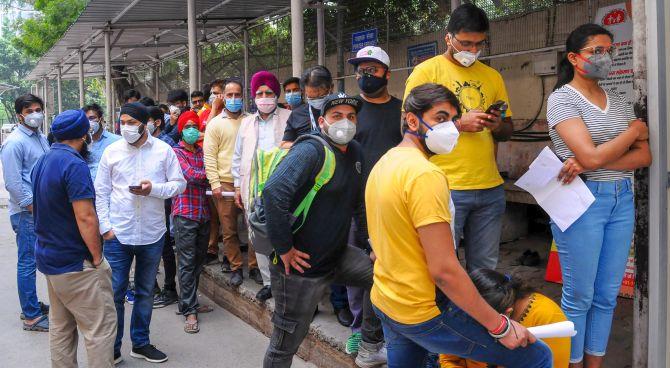
Indian households have entered the COVID-19 lockdown with a record level of debt and poor income growth, making it tough for many families to absorb income losses owing to the pandemic.
Indian households had debts worth nearly Rs 43.5 trillion at the end of March this year, up from Rs 6.6 trillion at the end of March 2008 and Rs 19.3 trillion five years ago at the end of FY15.
Outstanding retail loans are now equivalent to 21.3 per cent of India’s GDP in FY20, up from 13.2 per cent at the end of March 2008 and 15.5 per cent at the end of March 2015.
In the last five years, household income as indicated by the salary and wages bill of the country's top listed companies has expanded at a compound annual growth rate (CAGR) of 4.3 per cent -- against 17.7 per cent CAGR growth in borrowing by households or individuals.
This is based on the data by the Reserve Bank of India and the balance sheet of top listed non-bank retail lenders (please see chart below).
Some non-bank lenders in our sample include Housing Development and Finance Corporation, Bajaj Finance, Shriram Transport Finance, Indiabulls Housing, L&T Finance, and M&M Finance.
"In the past five-six years, compensation growth has been in low single digits, and, adjusted for retail inflation of 4 to 5 per cent, workers have barely managed to maintain their purchasing power and there has little or no income growth in real terms," says Dhananjay Sinha, head, equity, and head strategist, Systematix Group.
Many households and individuals, however, have maintained their consumption levels either by cutting back on savings, or resorting to borrowing, or both.
Household savings as a proportion of GDP declined to 18.2 per cent in FY19, the latest year for which data is available, from 19.6 per cent in FY15 and 22.4 per cent in FY08.
In contrast, the 2008 Lehman crisis was preceded by a period of strong double-digit growth in households's income, providing many families with a large nest egg to absorb the loss incurred.
For example, the combined salary and wage bill of a sample of 977 listed companies that are part of the BSE 500, BSE Mid-Cap, and BSE Small Cap indices grew at a CAGR of 24.5 per cent between FY04 and FY08.

The last few years have been dismal for households in terms of income growth and the resulting cash flows.
In the last five years, household income as indicated by the salary and wage bill of the country's top listed companies has expanded at a CAGR of 4.3 per cent, which is about the same rate as consumer inflation.
The divergence between income and consumption shows in the private consumption component of India's GDP.
In the past five years, private final consumption expenditure (PFCE) -- the consumption component of GDP -- grew at a CAGR of 16 per cent, nearly four times the underlying growth in salaries and wages.
The result has been a steady rise in household debt-to-income ratio, whichever way one looks at it.
For example, outstanding personal loans were equivalent to 21.3 per cent of India's GDP in FY20, up from 13.2 per cent at the end of March 2008.
A boom in retail credit means that interest on personal loans, including home and auto loans, now accounts for a greater proportion of a household's income and cash flows than in 2008.
This, analysts say, may force many individuals to reshuffle their household budget after the pandemic.
"Expect a sharp dip in consumption and down trading by consumers and rise in savings (as a proportion of their income) as individuals try to adjust their finances to the new economic reality," says Sinha.
Others say the crisis cannot be compared with the one of 2008, which originated in the US and affected largely financial services and foreign trade.
"Currently nearly 75 per cent of segments in manufacturing and services are shut. In 2008, on the other hand, the crisis led to a dip in India's merchandise exports while banks and financial services companies were not able to mobilise resources from overseas investors," says G Chokkalingam, CEO and founder, Equinomics Research & Advisory Services.
"The rest of the economy continued to operate as usual even at the height of the crisis."

